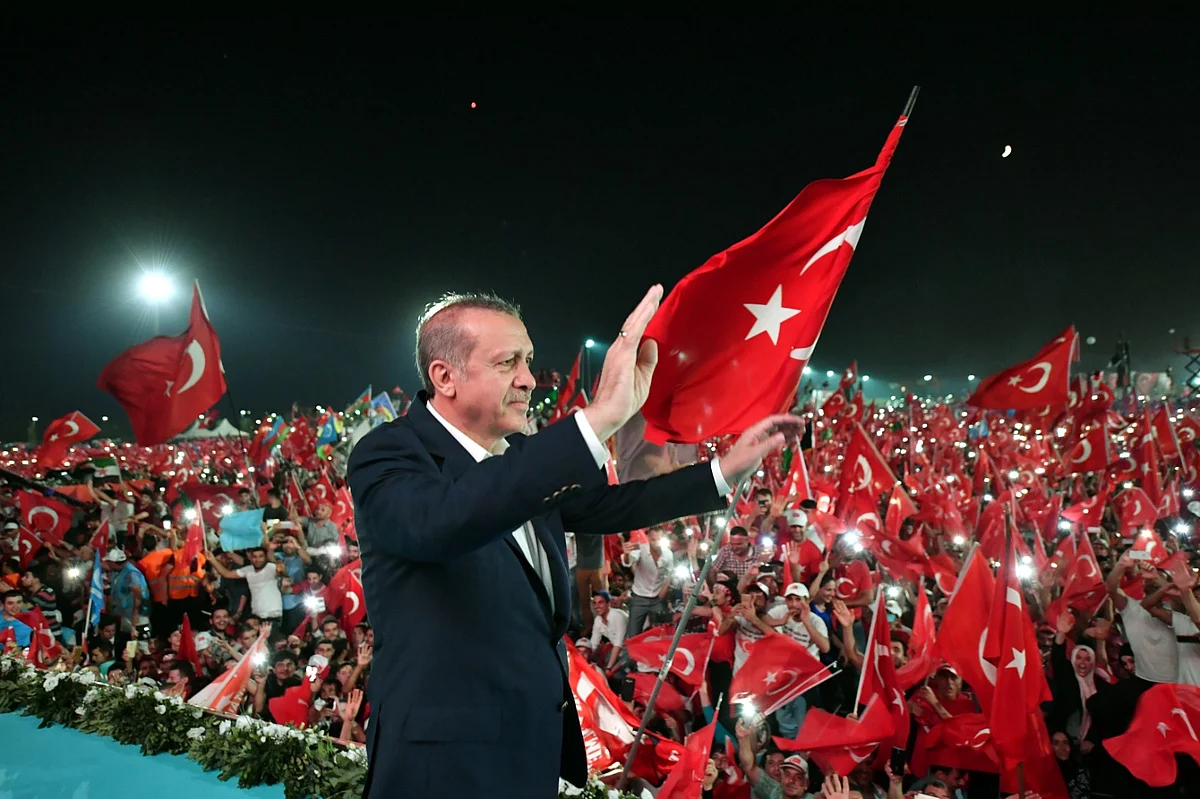Great Erdogan Escape
According to Ozturk, President Erdoğan at that time was vacationing with his family in the coastal resort town of Marmaris. Late that night, three military helicopters approached the hotel and began bombing.
Paratrooper commandos also started descending nearby.
But as documents show, they were too late—just 20 minutes earlier, Erdoğan had departed by helicopter for Dalaman Airport. He instructed the pilot to switch off the lights and fly low to avoid radar detection.
Skirmishes broke out between loyal special forces and rebel troops near the hotel.
Öztürk recalls that before fleeing, Erdoğan spoke briefly to a group of journalists in the hotel courtyard, condemning the coup and urging citizens to resist by taking to the streets. For unknown reasons, this statement was not broadcast.
However, after covering nearly 100 kilometres, Erdoğan reached Dalaman Airport and boarded a private jet. At 12.23 AM, he appeared live on CNN Türk via FaceTime, issuing a powerful appeal that triggered a flood of citizens onto the streets.
The Speaker of Parliament convened an emergency session, ordering all MPs to rush to the chamber. Tanks opened fire near the parliament building, which was also bombed from the air.
Meanwhile, Ankara’s Mayor, Melih Gökçek, ordered all municipal trucks—including heavy garbage vehicles—to block access to military bases, successfully slowing the rebels’ advance.
Around 1.00 AM, Erdoğan gave another phone interview to CNN Türk, urging citizens to ignore curfews and gather at Istanbul’s Atatürk Airport. He announced that he, too, was en route to the city.
His plane had taken off from Dalaman at 11.47 PM and landed in Istanbul at 2.50 AM. Reports later emerged that the aircraft was targeted en route, but the pilot identified it as a Turkish Air Force flight, averting a shoot down. A US website had published its flight path, raising first suspicions of American complicity in the coup.
From 11.00 PM to midnight, helicopter strikes targeted police special forces and air force command centres in Ankara’s Gölbaşı district. The headquarters of Türksat, Türkiye’s main satellite operator, was also attacked.
At 11.50 PM, troops seized Istanbul’s iconic Taksim Square. By 1.00 AM, tanks were still stationed inside the airport, and gunfire echoed through the terminal. The goal was to prevent Erdoğan’s arrival or to arrest him immediately. However, due to his televised address and the surging crowds, the military began retreating.
But in Ankara, by 3.00 AM, parliament remained under siege. A helicopter continued firing on the building. At 3.12 AM, Prime Minister Binali Yıldırım declared that the government had regained control. Ankara was declared a no-fly zone, and any unauthorised aircraft would be shot down.
Upon landing in Istanbul, Erdoğan addressed the nation from inside the airport, where millions had gathered. At 6.30 AM, he emerged to declare, “In Türkiye, governments now change only through the ballot box. The military cannot run the state.”
He blamed the coup on Fethullah Gülen and his Hizmet movement, allegedly backed by foreign powers.
Rebel soldiers at Taksim Square and the Bosphorus Bridge surrendered to the police—perhaps the only time in history when the military yielded to civilians and police forces. By 5.18 AM, the government had regained full control of Atatürk Airport.
However, clashes at military headquarters in Ankara continued until 8.00 AM. Some 700 armed soldiers surrendered, while 150 were cornered by police. The coup had clearly collapsed.
Türkiye has witnessed four military interventions against civilian governments in its democratic era.
